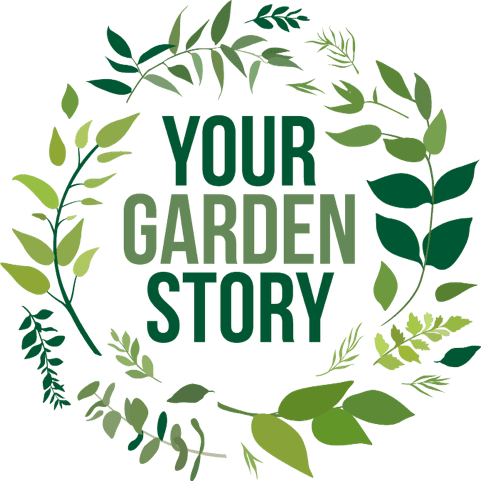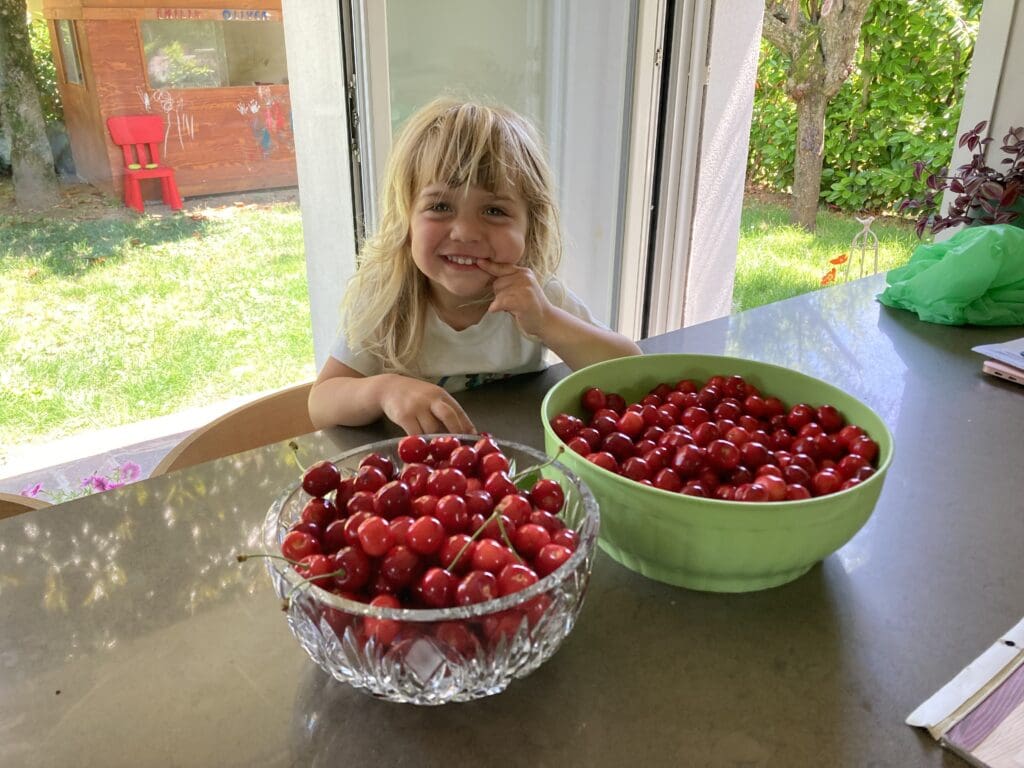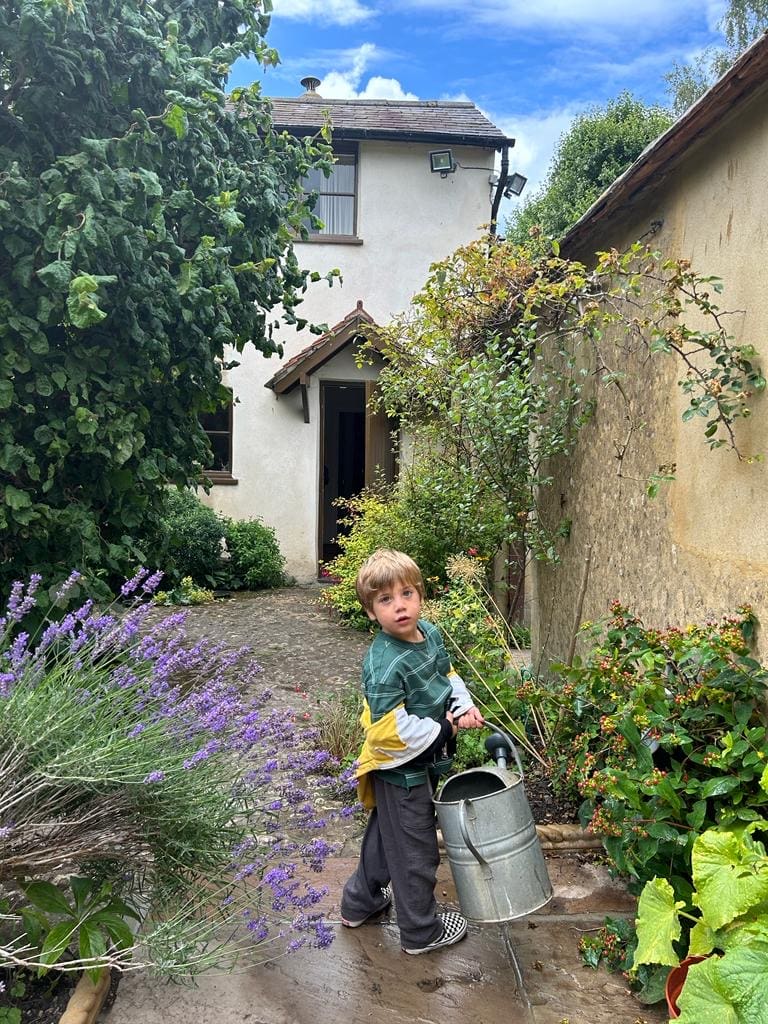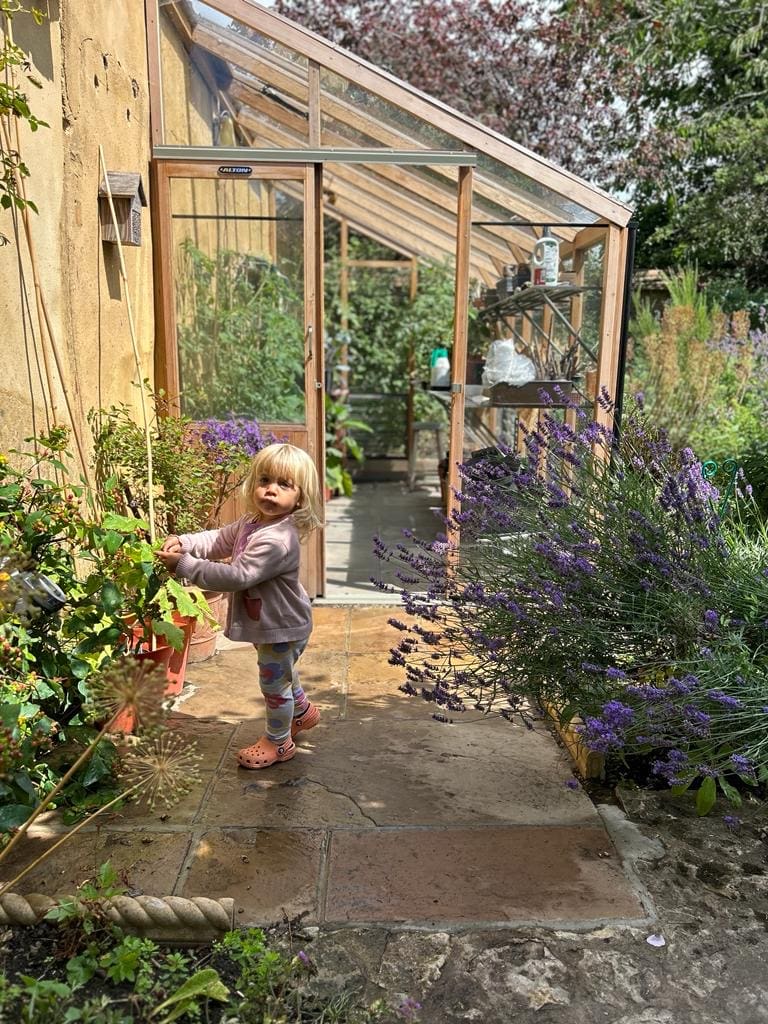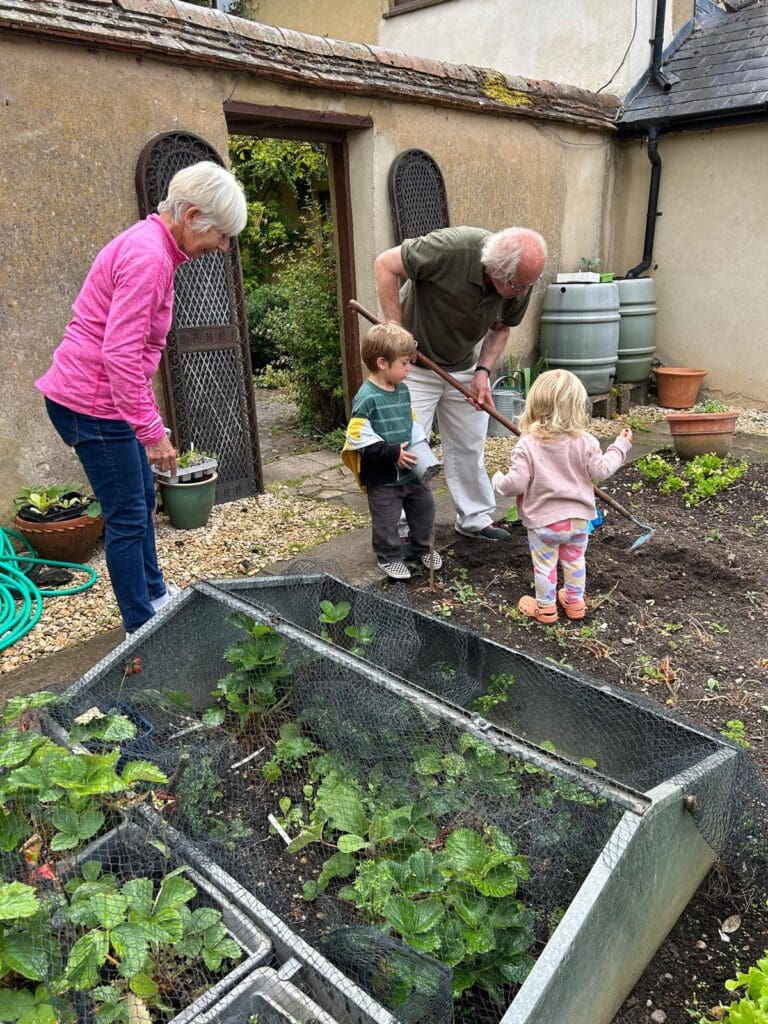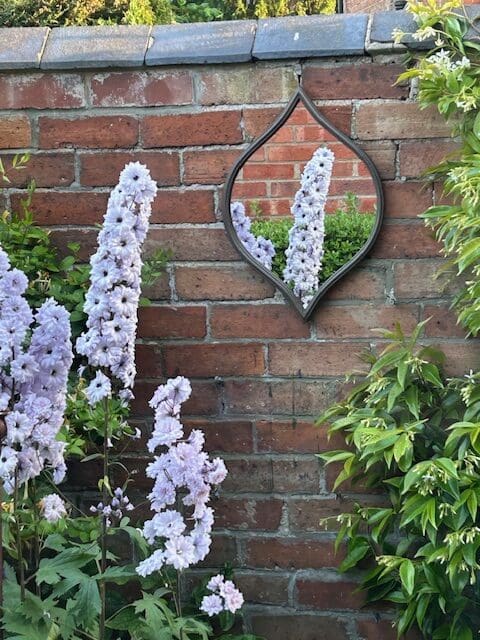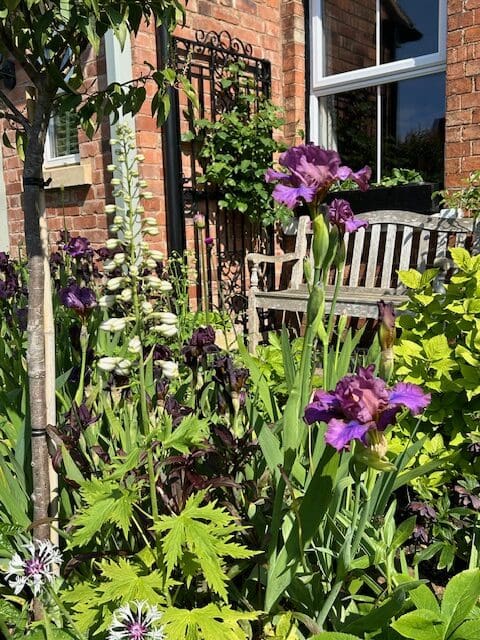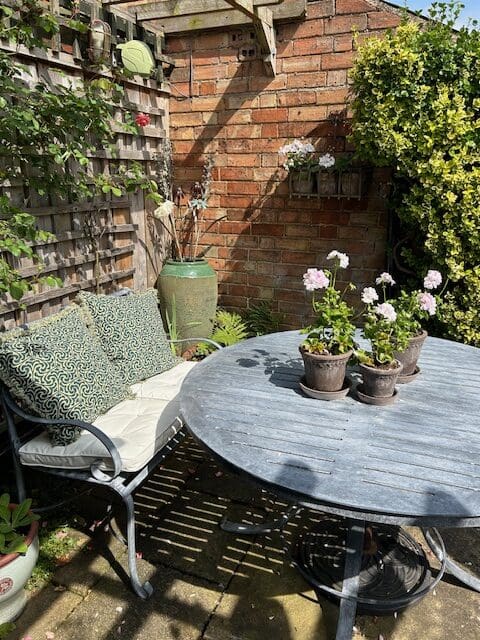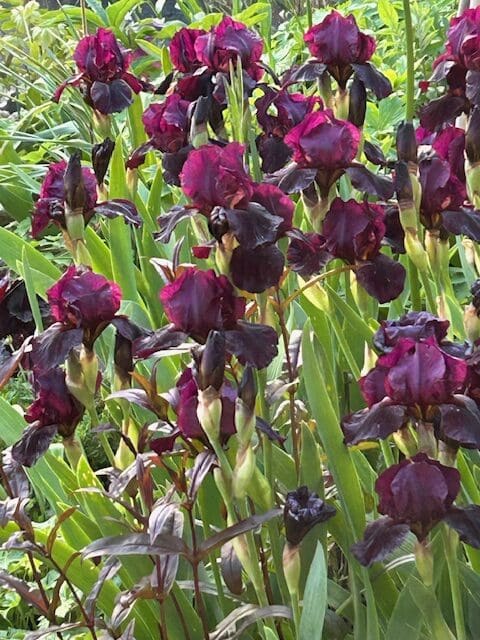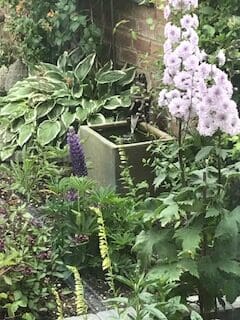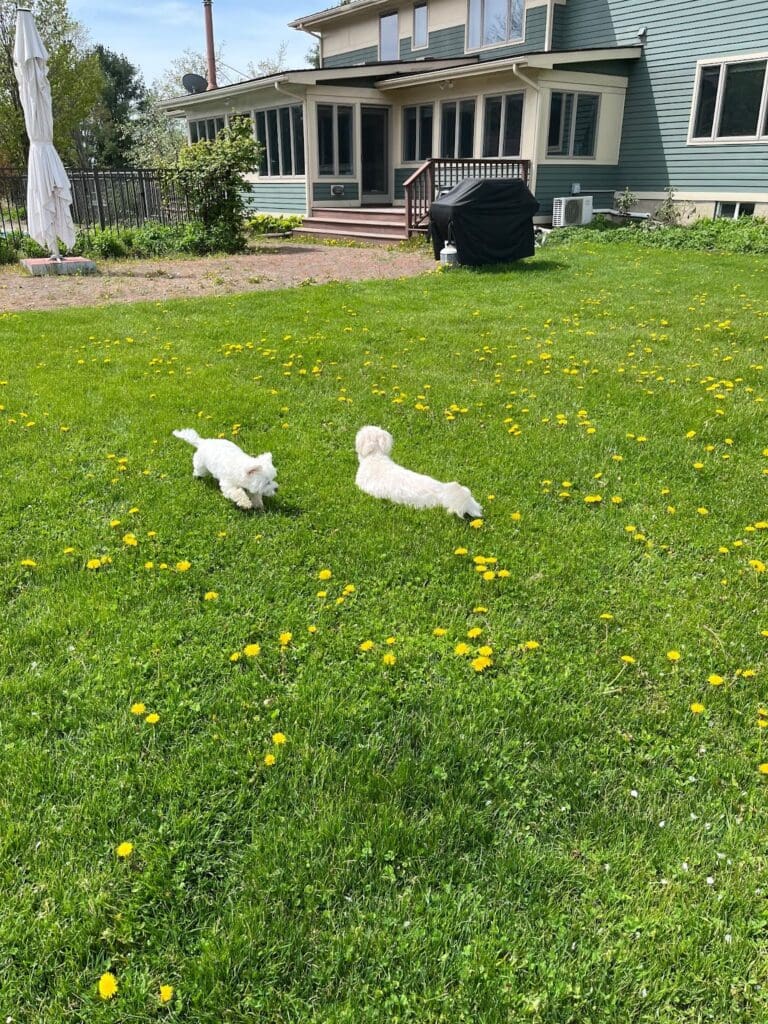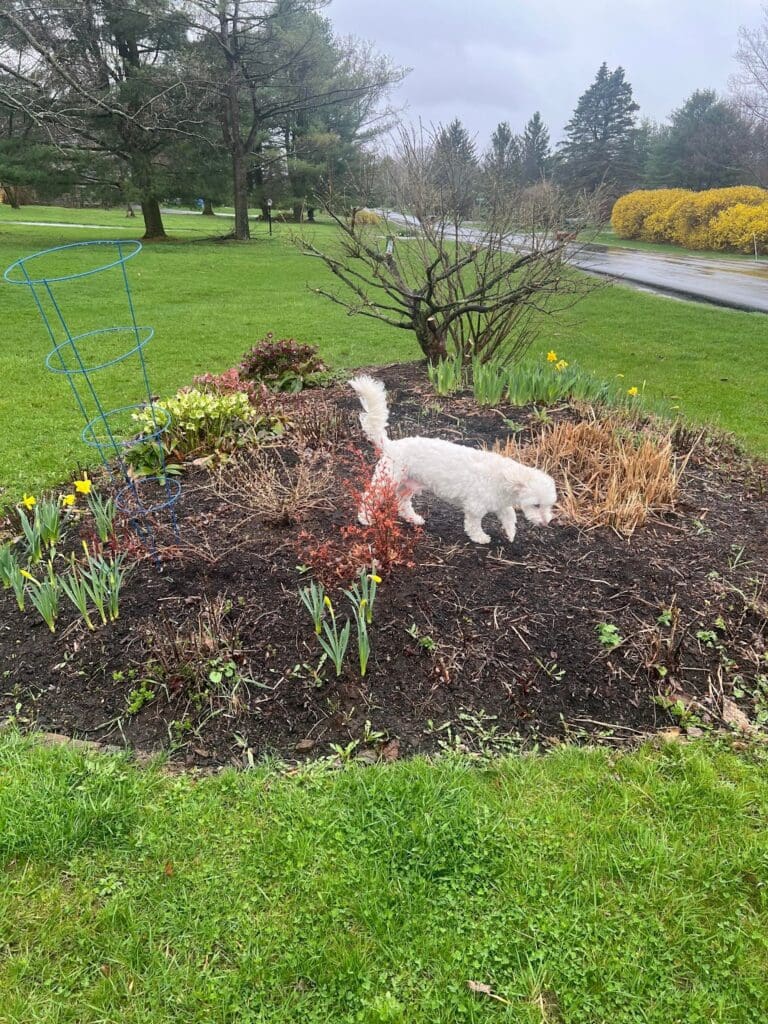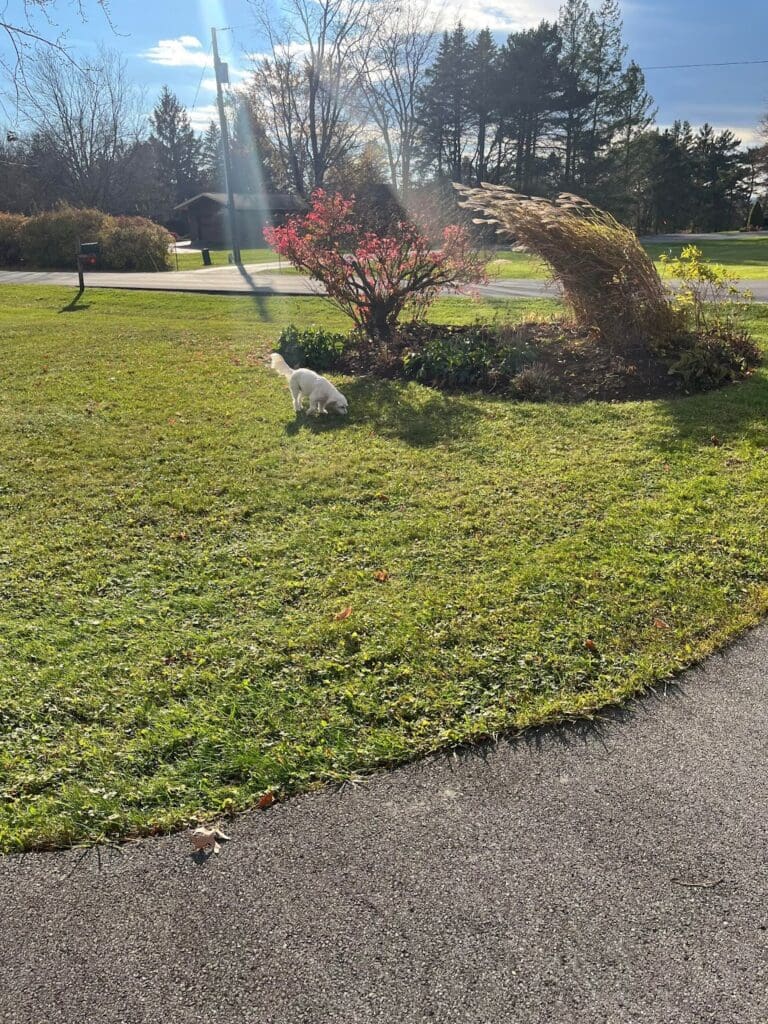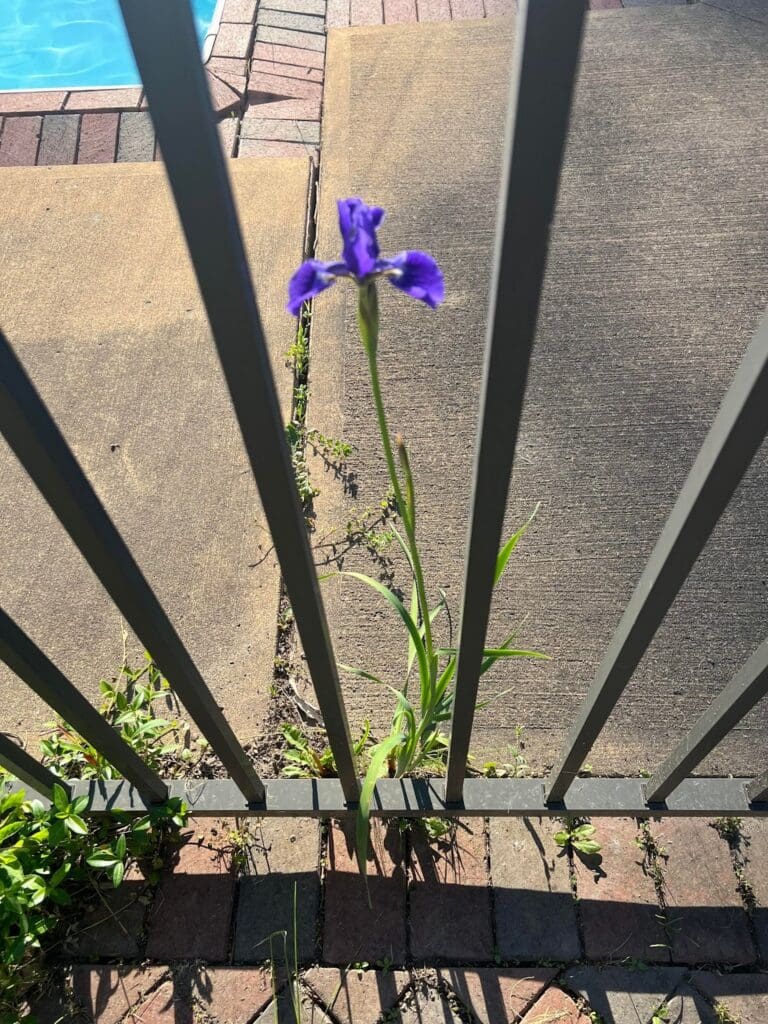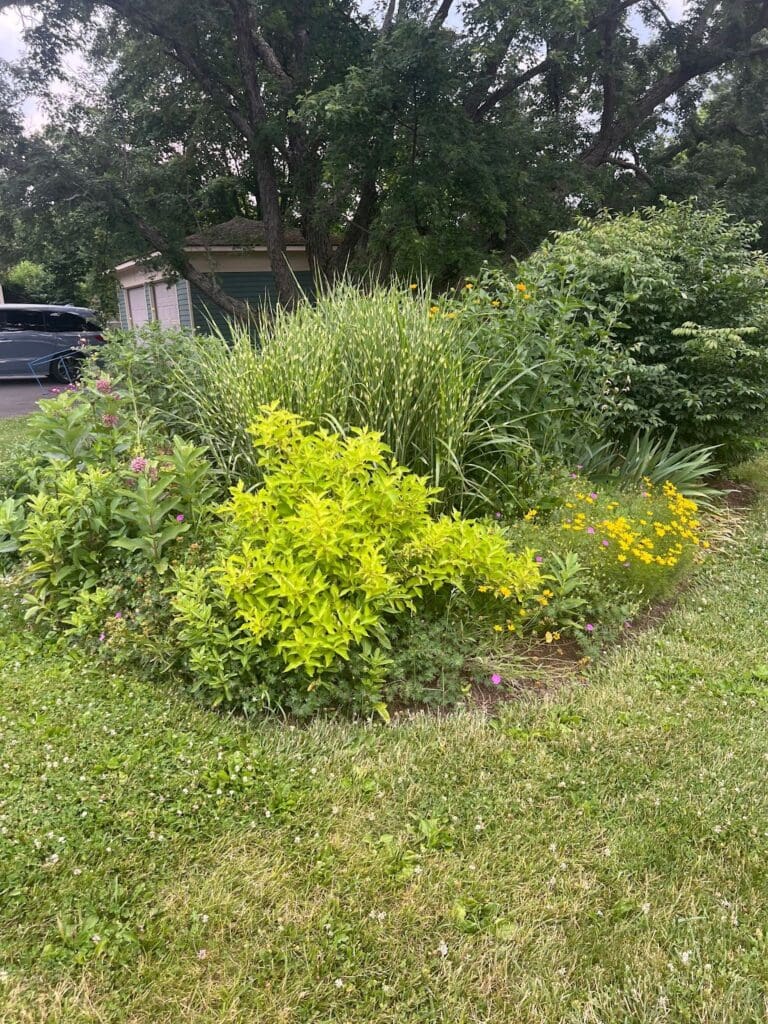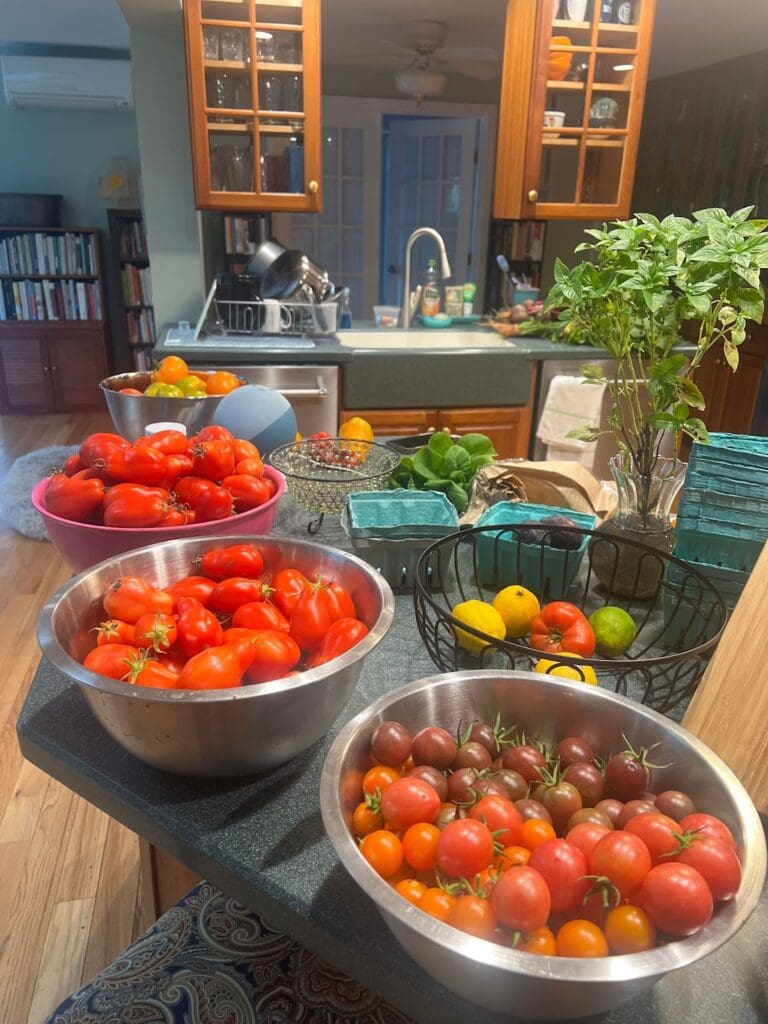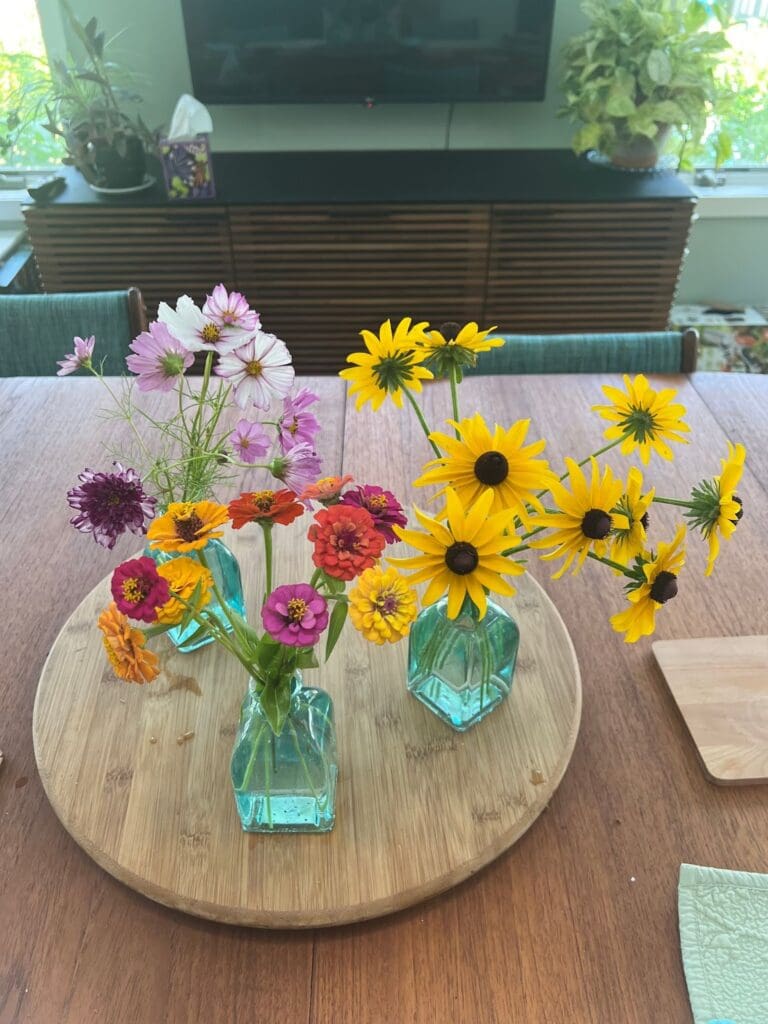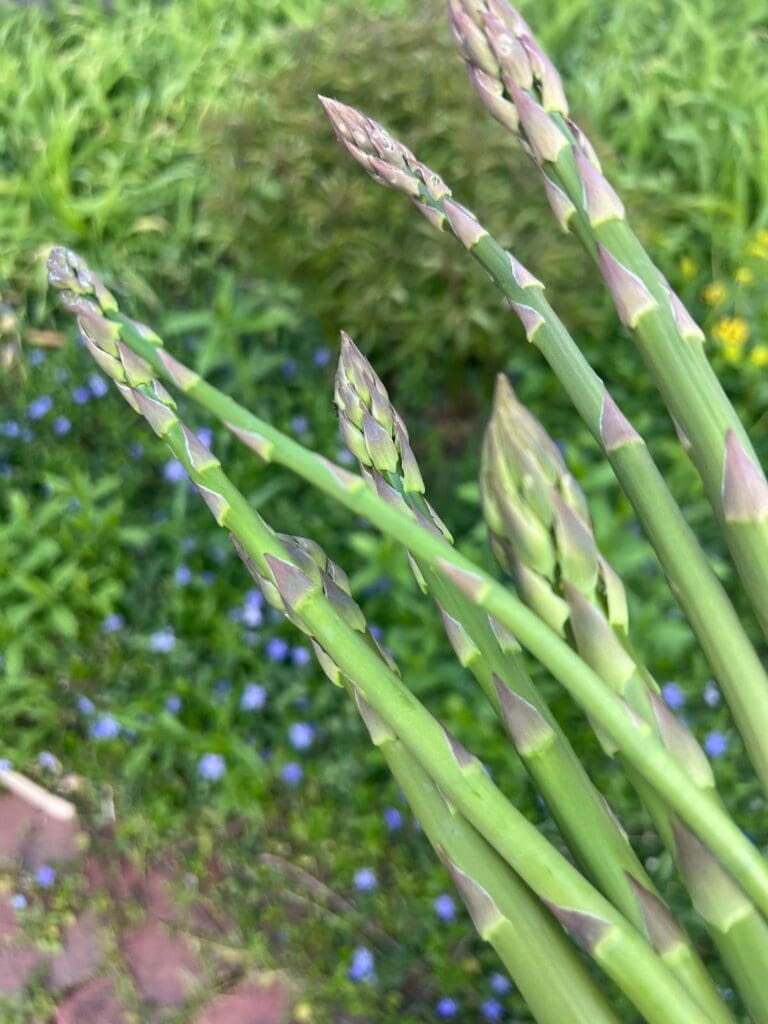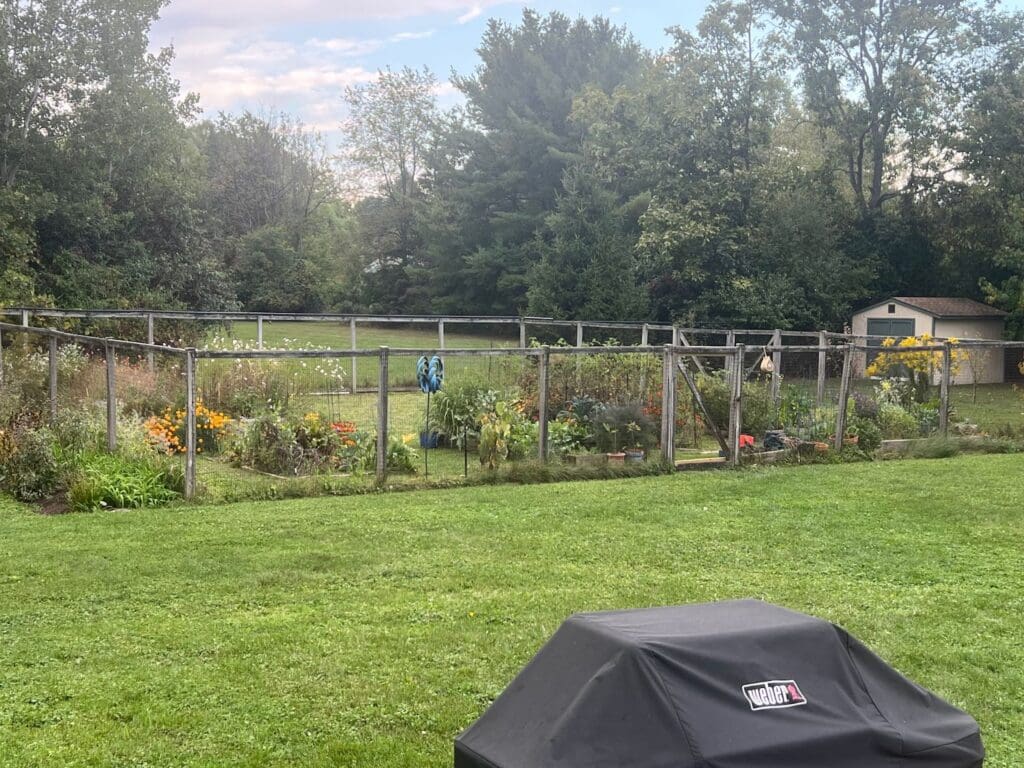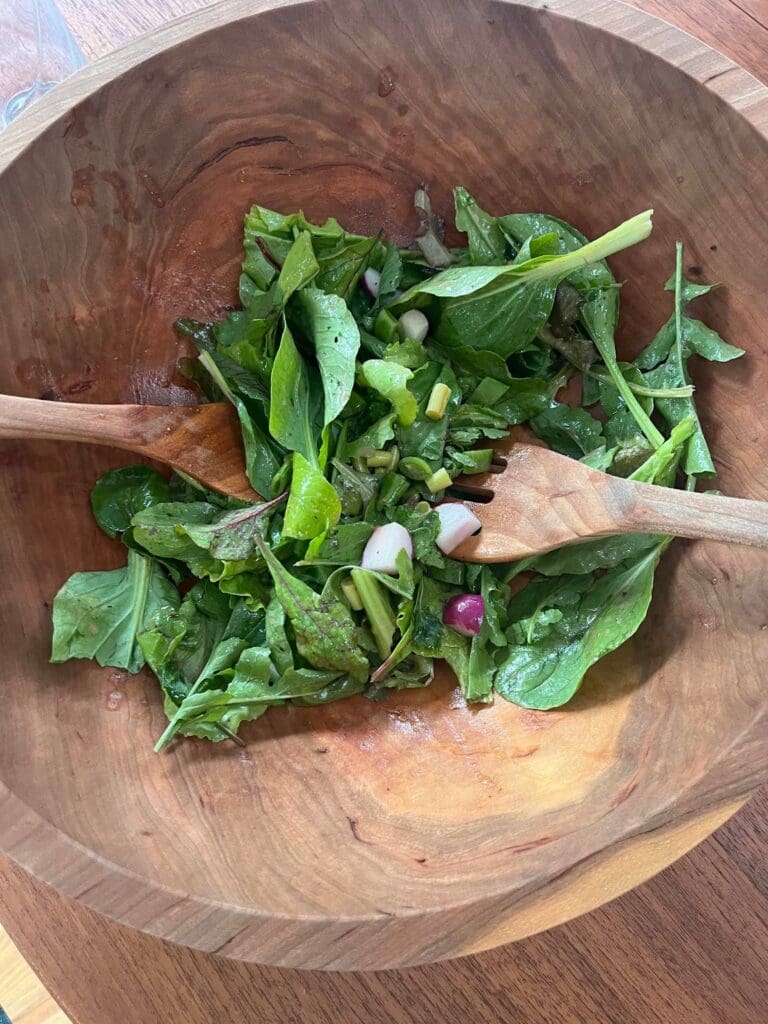We had such great feedback on our first Gardening Friends and Family blog that we decided to do it again. Everyone loved hearing about John’s okra and hand-sketched vegetable garden plans, Melissa’s native shrubs and my Mum and her husband’s container gardening. The common theme was the joy of shared experiences and the delight in the annual growing cycle, whether vegetables or flowers. So here again, by popular demand, is the next in the Gardening Friends and Family series written by my dear fellow gardeners Dave, Kate and Sarah. I hope you enjoy reading them as much as I did – honestly, it makes my heart sing to hear their stories.
Dave Webley – Rimini, Italy
Since growing up in the English countryside and watching my Dad spend time (and obsess) in his garden, I have always been drawn to gardening and horticulture. Our children have also been lucky enough to follow in my footsteps and to help Nonna Jenny and Nonno Mike garden in the same classic English garden.
At age 20, I moved to the States and lost touch with my green side until I studied Landscape Design at the New York Botanical Gardens, which I thoroughly enjoyed. I am very much an amateur gardener, mainly because I lacked the experience and space to experiment. However, my passion for the flora and fauna of where I live or travel has always been present.
I relocated with my family from New York to the Adriatic coast of Italy four years ago (I was lucky enough to meet an Italian lady in NYC!)…..and have been slowly getting used to a new climate for all things horticultural.
We purchased our first family home in the countryside of Rimini almost two years ago, and much to my delight, it has a small wraparound garden, with plenty of work needed! I was thrilled to see the variety of trees already there, which include a cherry, plum, apricot, olive, magnolia grandiflora (which flowers magnificently), oleander, and three jujube trees, which the kids love to eat in mid-October!
Last year, I decided it was time to dabble in making Tabasco sauce from homegrown pepper plants. After visiting Giardino D-Autore, a must if you are ever passing through, I purchased 2 Tabasco plants (starting slowly here). I gifted one to a Dad at our son’s school, a fellow lover of hot sauce, and we set out to tend to our own little harvests.
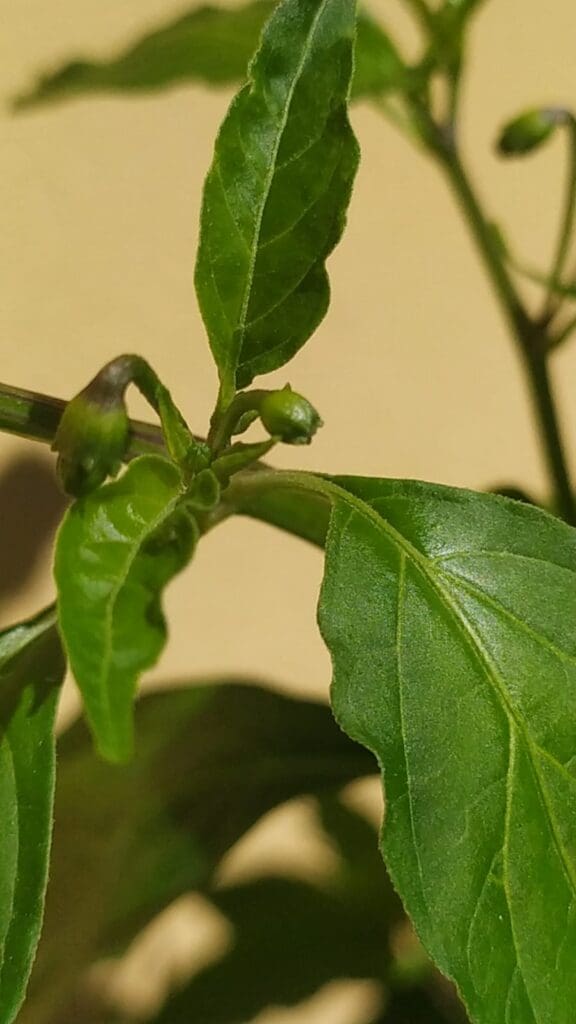
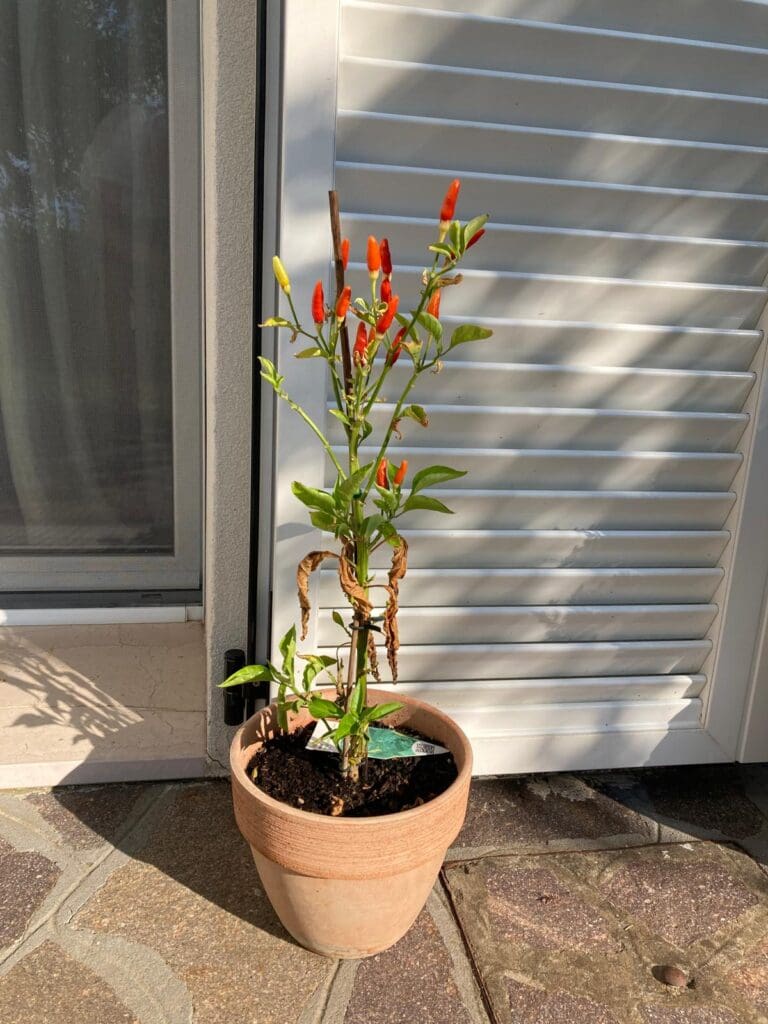
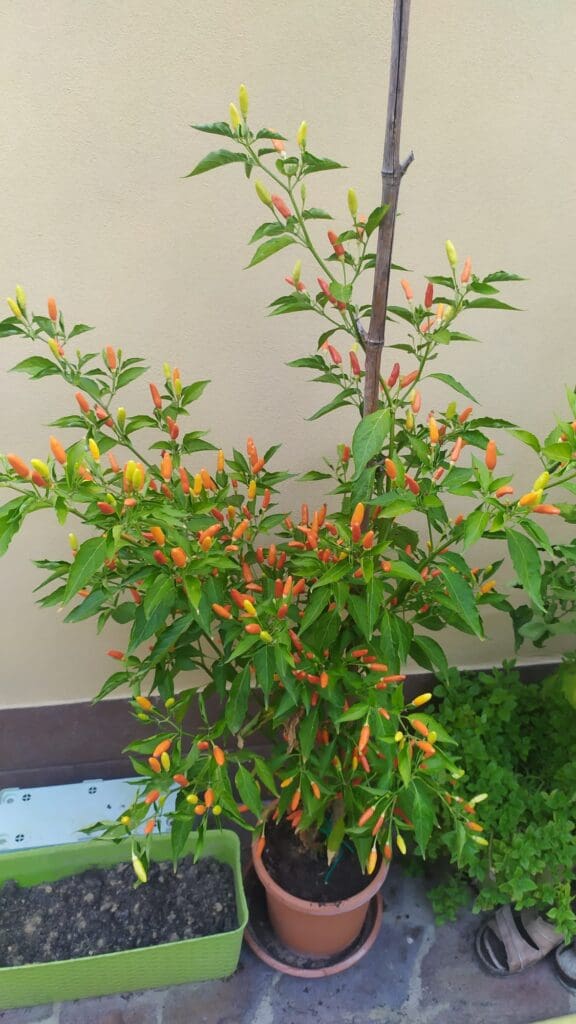
As can be seen by the photos, clearly one of us got the right balance of care vs not….much to my embarrassment! Andrea’s Tabasco plant was an absolute beauty and yielded well over 100 peppers, as for mine I like to focus on quality over quantity, clearly…
After a hard day’s harvest, I looked up the recipe, which, much to my delight, was a very simple Tabasco Red Pepper Sauce Recipe. However, what I was not prepared for was the searing heat created in the kitchen as I followed the recipe. It was so intense that I actually had to abandon the station and rinse my face with cold water! Convinced the sauce would be inedible, I was amazed and delighted to sample the perfect blend of sweetness and heat.
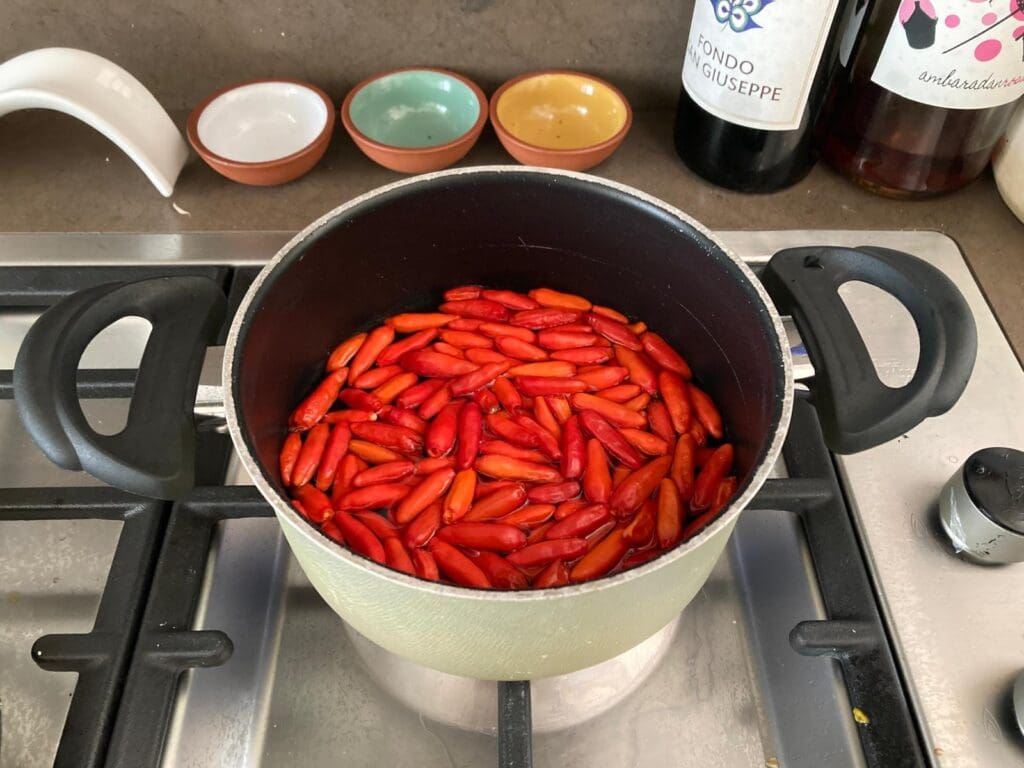
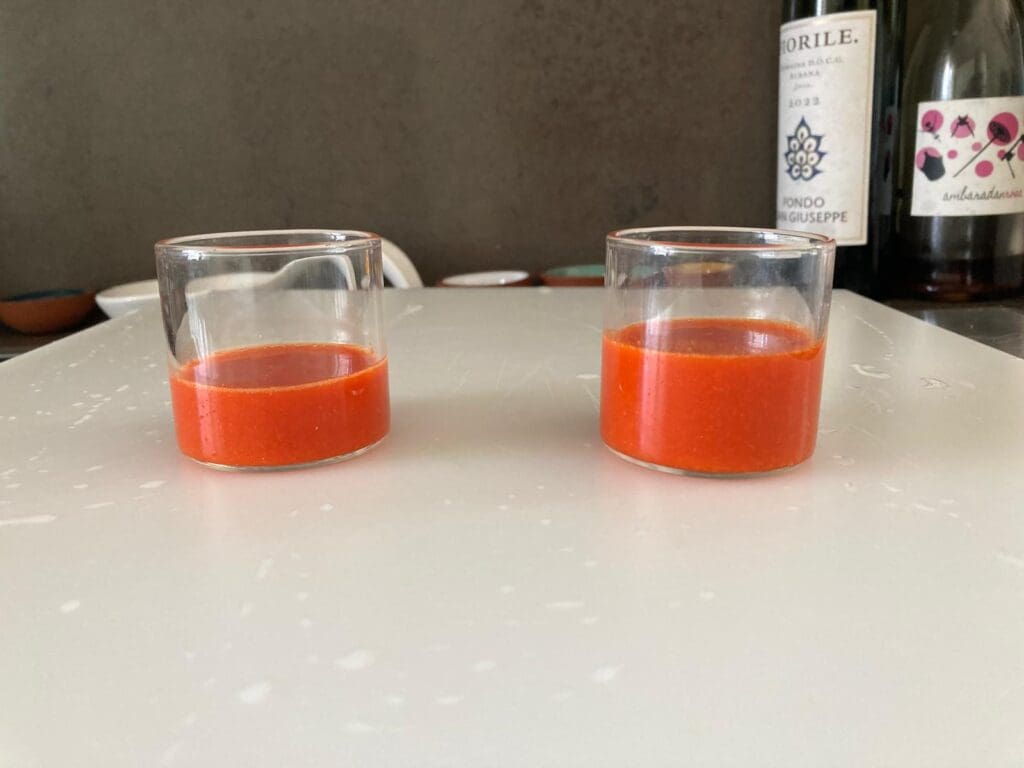
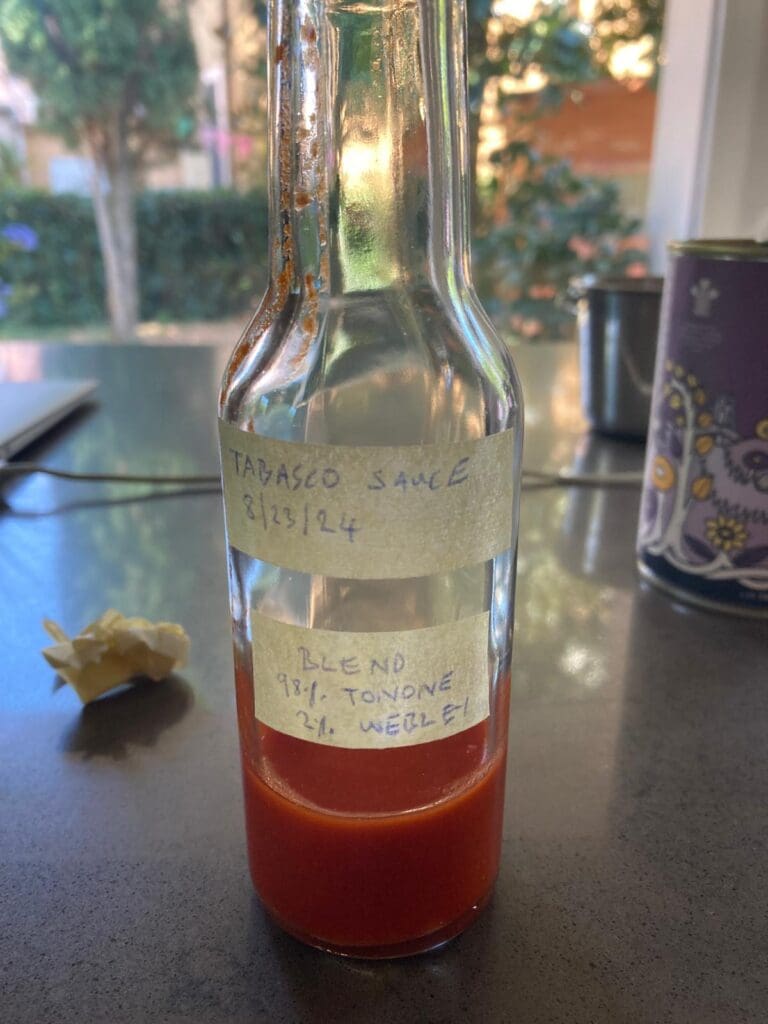
There was a modest return from the first experiment, but it was encouraging for future crops, and I will be sure this year to invest in more Tabasco plants. After bottling up the sauce, I was sure to give Andrea 98% credit for the homemade sauce.
This year I will know the perfect spot for my Tabasco plants…more to follow.
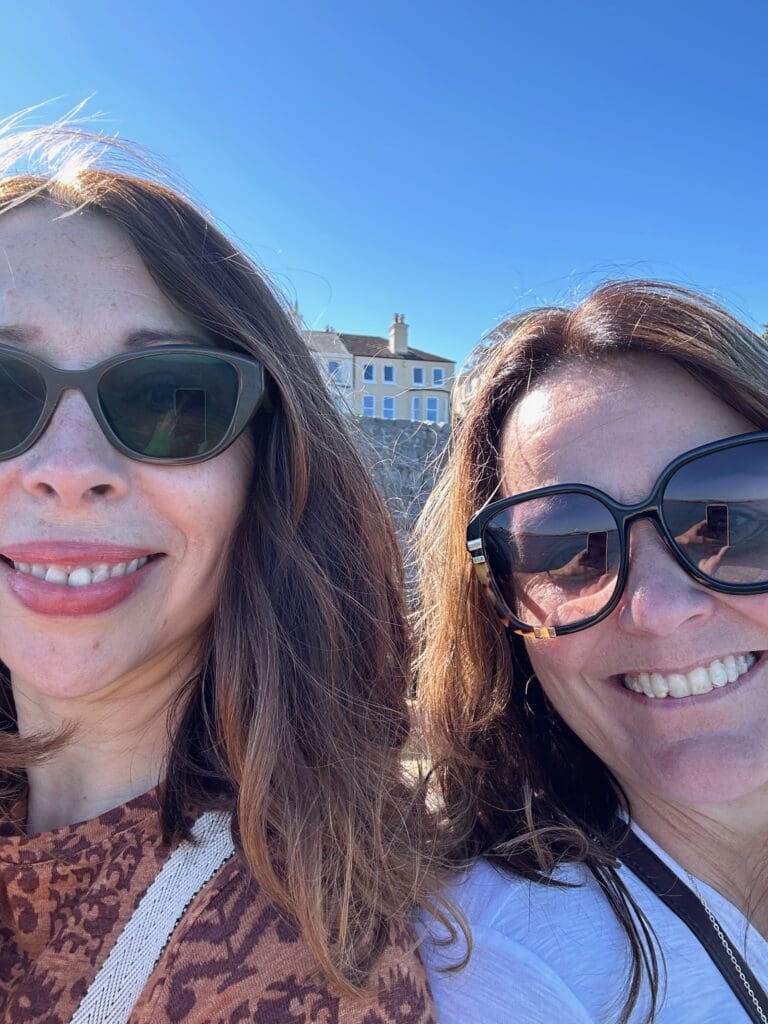
Kate Parker – Childswickham, England
I had always dreamt of having a walled garden, and when I moved into Rose Cottage in 2018, my dream came true. The two-bedroom Victorian Cottage, near Broadway in Worcestershire, dates back to the 1890s. It has a small east-facing back garden (with two sheds and a summerhouse) and a front garden that doesn’t see the sun until the end of the day.
When I arrived, both gardens were well stocked with plants, the most abundant of which were very thorny old roses with their heads up in the sky. Unfortunately, many of them had to go, and I decided to keep just three by the kitchen door. There needed to be some; after all, it is Rose Cottage.
My friend, Jackie, a former garden designer, came over armed with her tape measure, and together, we considered how to create some design cohesion. Firstly, we reshaped the lawn into a clean, oval shape and edged it in galvanised steel. This would soon rust and work well alongside the Victorian red brick.
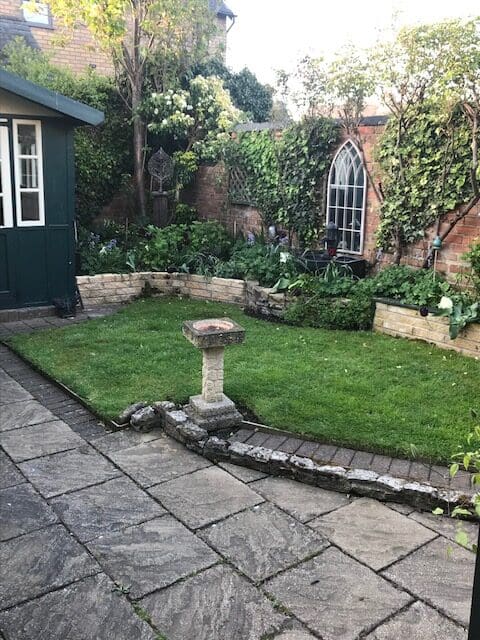

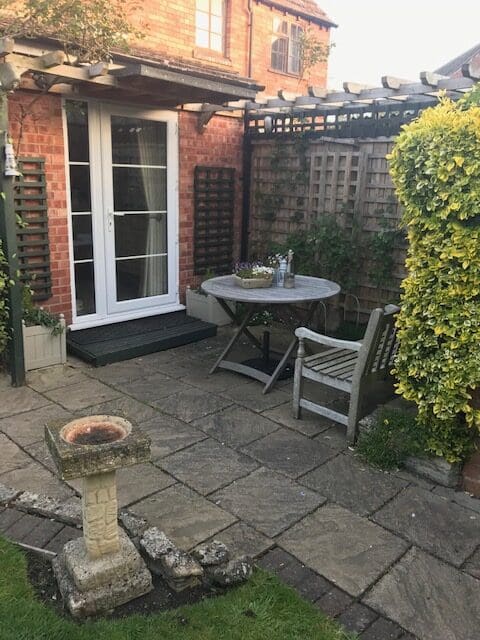
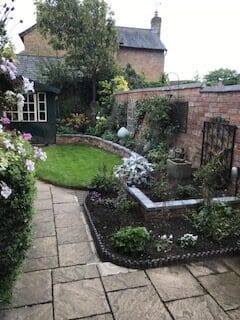
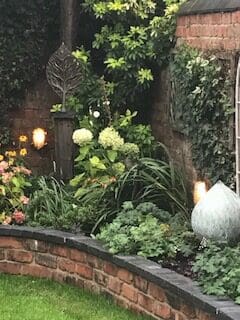
A new wall of reclaimed red bricks, topped with engineering bricks and a two tier flower bed created with Victorian edging tiles was built by a local landscaper. These new materials sat harmoniously with the existing garden wall and cottage. The incongruent plastic water feature was removed and (as luck would have it) we found an original cast iron water pump hiding behind the summer house. We utilised this with a planter, in a lovely viridian green, which we eventually managed to waterproof to create a new water feature with an antique feel.
Planting is dictated by a mainly north-facing aspect. Gradually some of the inherited plants have been edited out. A white Montana clematis which spent most of its time trying to clamber over the wall to next door’s sunshine, was one such casualty. Removing this one plant has created space for three others to flourish – a beautifully scented jasmine, a climbing hydrangea and a previously, barely visible purple clematis. All three now thrive.
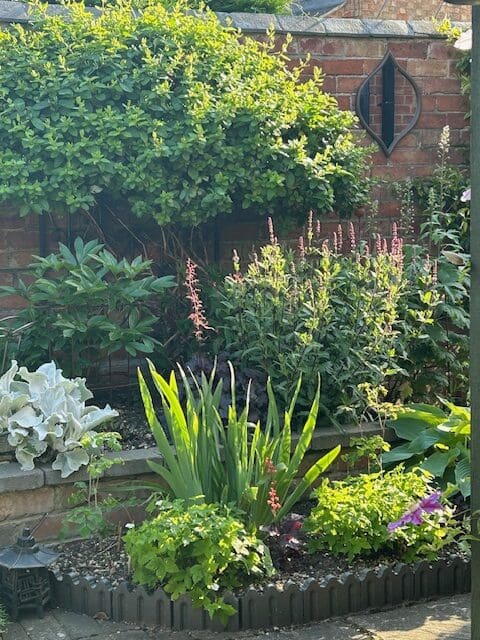
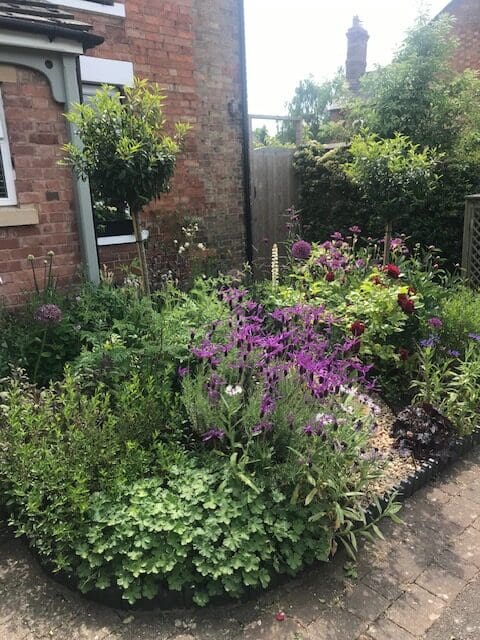
Come spring, a lovely collection of deep burgundy tulips, alliums and hellebores start to appear. Next are the elegant irises which have been donated from Jackie’s extensive collection. The perennials include cottage garden favourites – ferns, hostas, hydrangeas, heucheras, salvias, peonies, Japanese anemones, penstemons, flox, verbena, delphiniums, poppies, foxgloves and geraniums all jostle for space.
Although guilty of trying to fit in too many plant varieties, I do try to stick to a limited colour palette. Working with dark burgundy (especially foliage), lime green to add zing, and a calming scheme of mauves, white\cream and blues.
I do feel that you have to work harder with a small garden. You can’t let anything take over and dominate because there isn’t space. Every inch counts. Come winter, sculptural pieces, including beautiful mirrors, a large bronze leaf, and artichokes, in various materials, provide much-needed form. Visitors are enchanted by the small garden, and it gives me joy every day.
Sarah Abramowitz – Brooklyn & Ithaca, New York
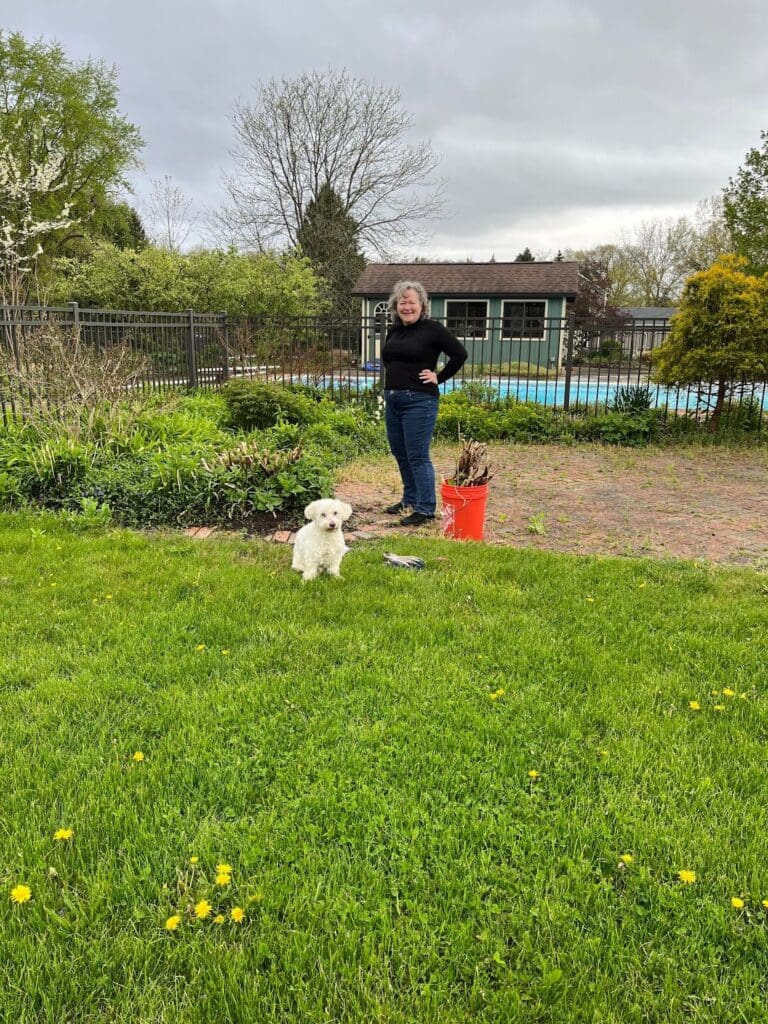
Lessons Learned from the Garden
I grew up in a rural area of upstate NY on an acre of land. My mom maintained a large vegetable garden, which served as a significant source of food for the family. My favorites were asparagus, berries, and tomatoes, and I learned early on how good fresh food tastes. As an adult, I moved to Brooklyn and was limited to growing some herbs and lettuce in our apartment, though we did develop some favorite dishes featuring whatever was produced each spring, summer and fall. Even apartment basil, rosemary, parsley and thyme beats the supermarket.
Three years ago we bought a summer house in my old hometown from a family who had lived there for 20 years and loved to garden. The back of the property is fenced, and there are apple trees, flowers, berries, and asparagus. I am applying lessons from my mom and continuing to learn as I experiment and branch out. You can learn so much online, particularly from Wendy’s videos! The plant identifier on my iPhone is a constant companion, and the former homeowner has been very generous with his expertise. So, though I’m only in my fourth year with this garden, it’s clear to my family and friends how much I love it despite the hard work, critters, and vagaries of upstate NY weather. My family, especially my husband, Dave, have been a huge support and are coming around to how wonderful it is to have a garden. Thank you to Wendy for allowing me to share a few things that have been reinforced or learned from my trials and errors.
- One of the first lessons my mom, who grew up in New England, taught me is “waste not, want not,” something I’ve been applying in my own garden. Each fall, I save my marigold and zinnia seeds and resow them. The photo shows my collection of seed heads this year. I get more and more flowers every year, and it feels good to have that self-sufficiency. Composting is even more miraculous. Our property includes a copse with several piles where I put my kitchen and garden scraps, eggshells, coffee grounds, grass clippings, fall leaves, and garden detritus. After a year, I use it to restore my garden beds in the spring. The soil is rich without the addition of chemical fertilizers, and I’m happy to do my share to protect the environment.
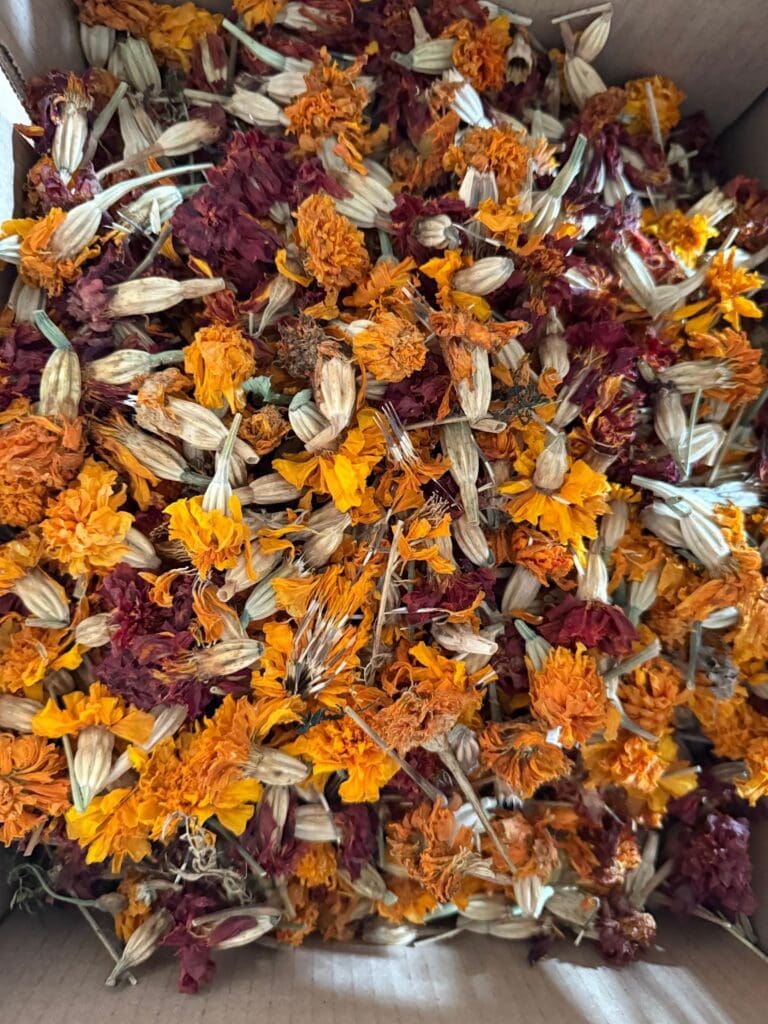
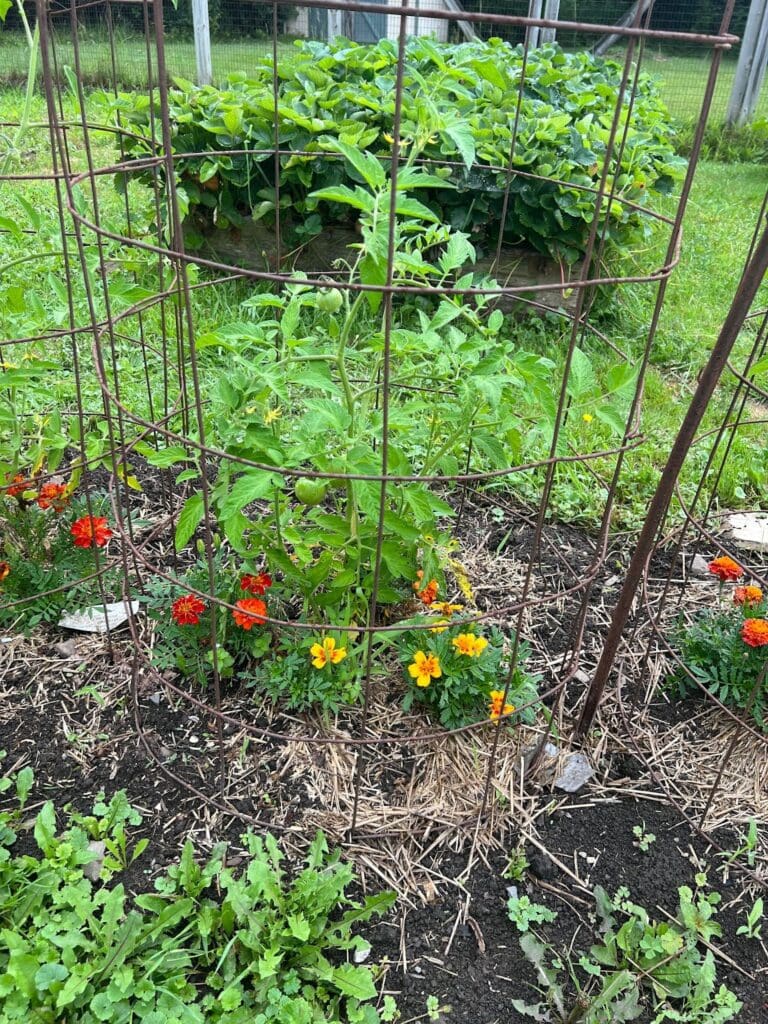
- My garden helps me practice patience, which is not one of my strong suits. We have several apple trees that have gorgeous flowers in the spring, and then I wait patiently for their fall abundance. I’m “patiently” waiting for asparagus tips to start appearing. I have also had to hold off on weeding several times until I could determine what the plant was. We recently upped our patience game by putting in several other types of fruit trees last spring; who knows when they’ll produce fruit?
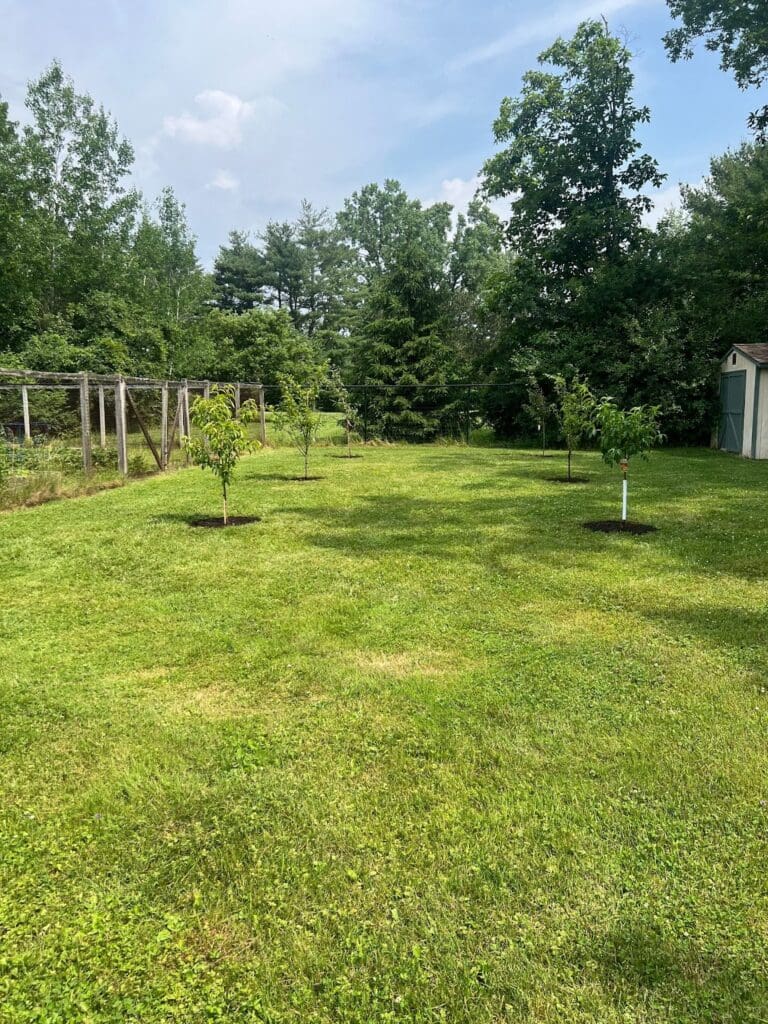
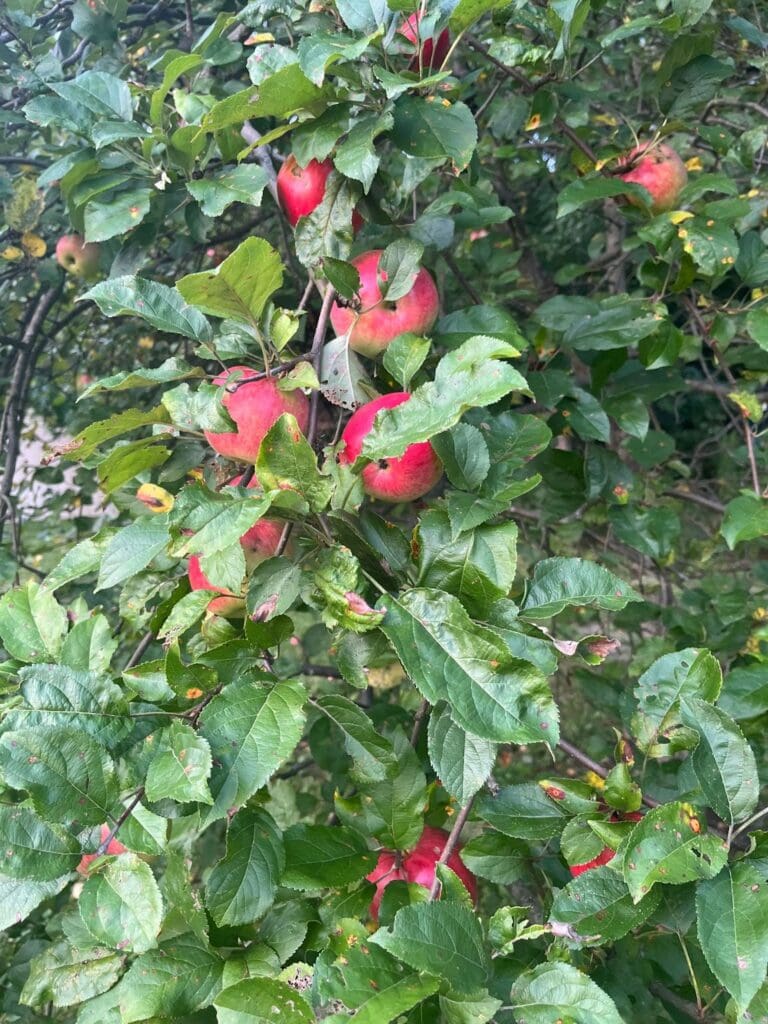
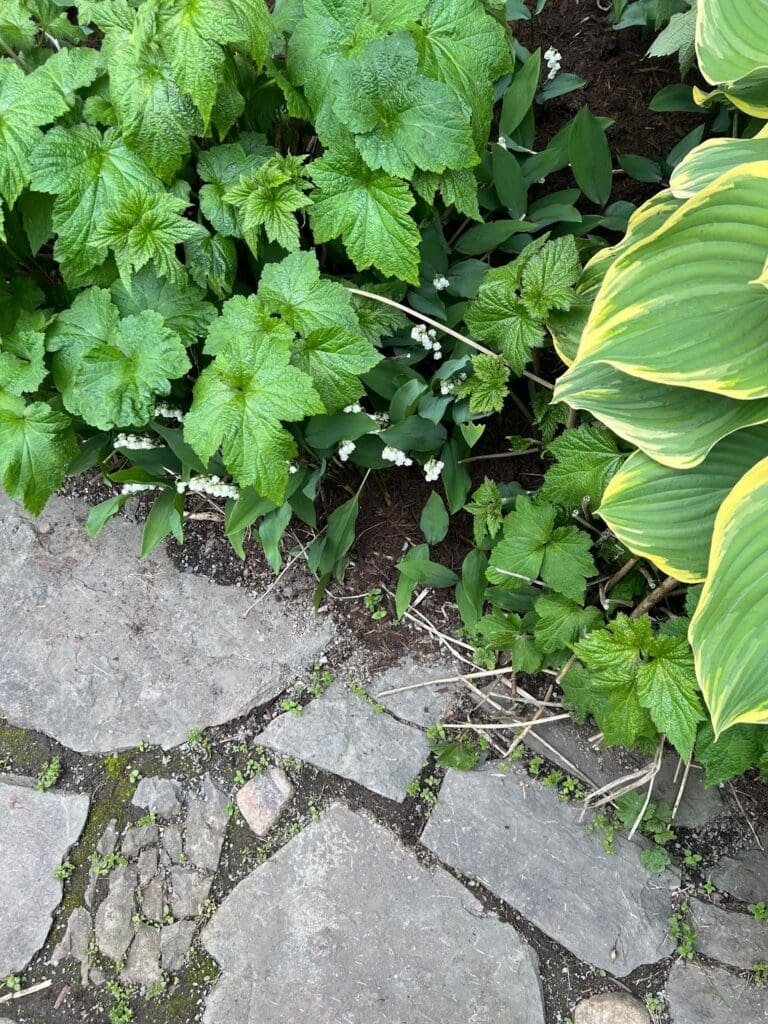
- My garden helps me notice the small things. They are some of the best things, even though they might be overshadowed by some seemingly bigger and showier things. The photo shows some lily of the valley hidden among the anemones and hostas.
- My garden teaches me to let nature take its course and not to try to control everything. Actually, nothing can make me learn that, but at least the garden gives examples where backing off can be effective. I love the overgrown look of the area around the pool. I also love the more spare look earlier in the season.
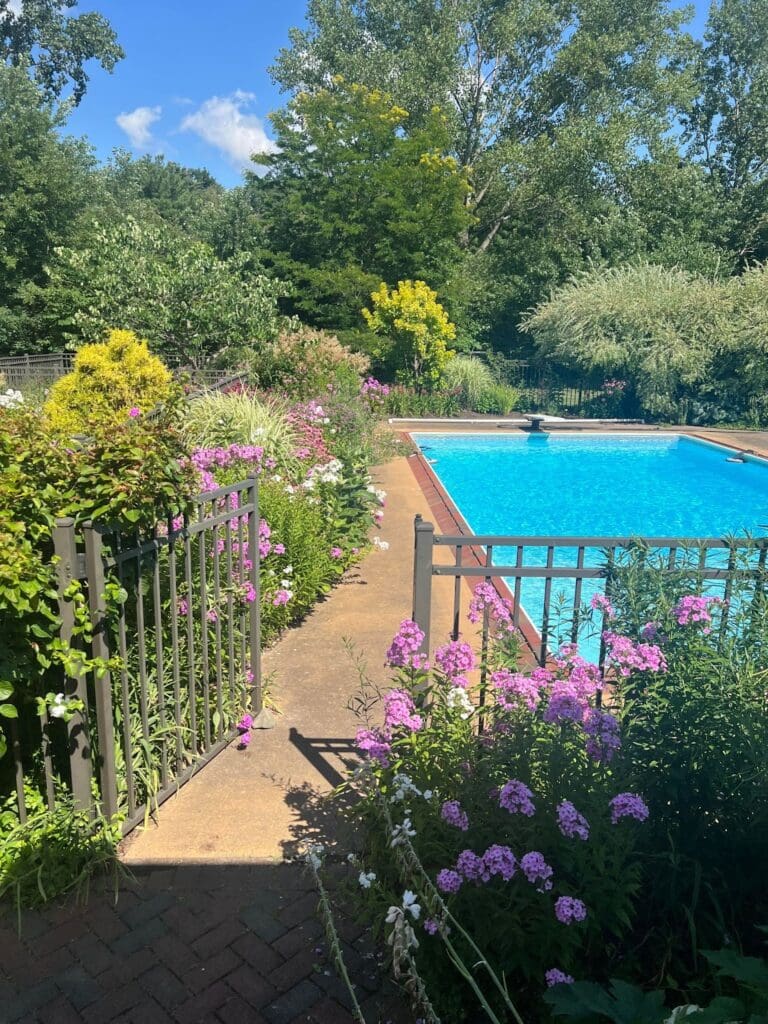
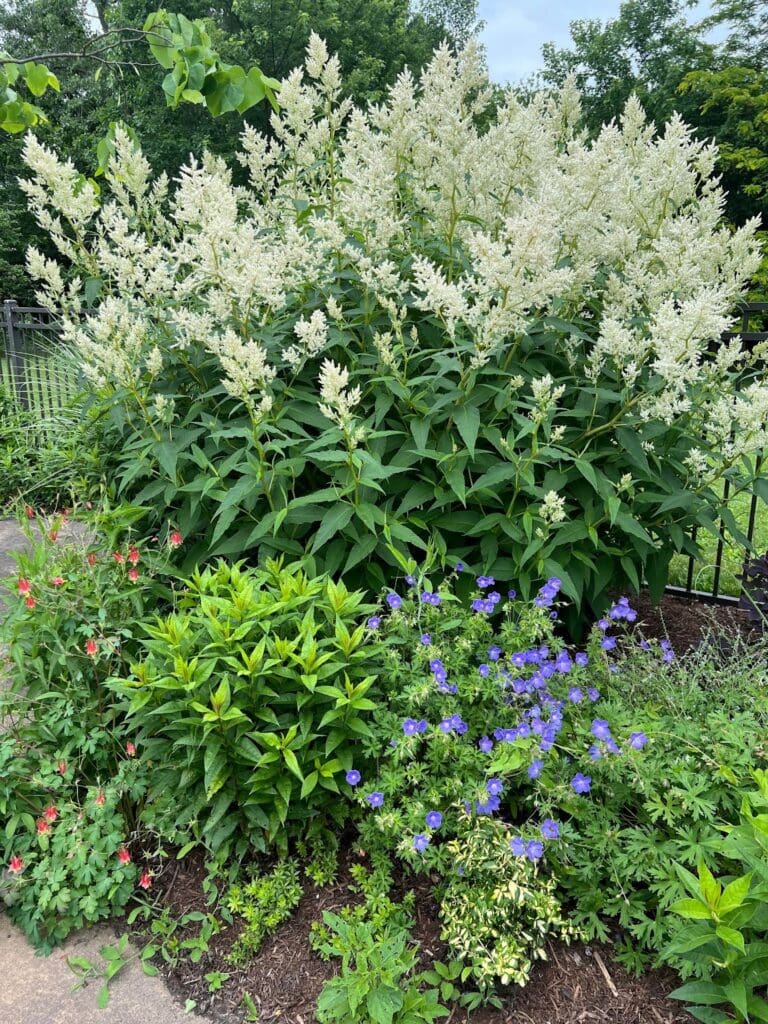
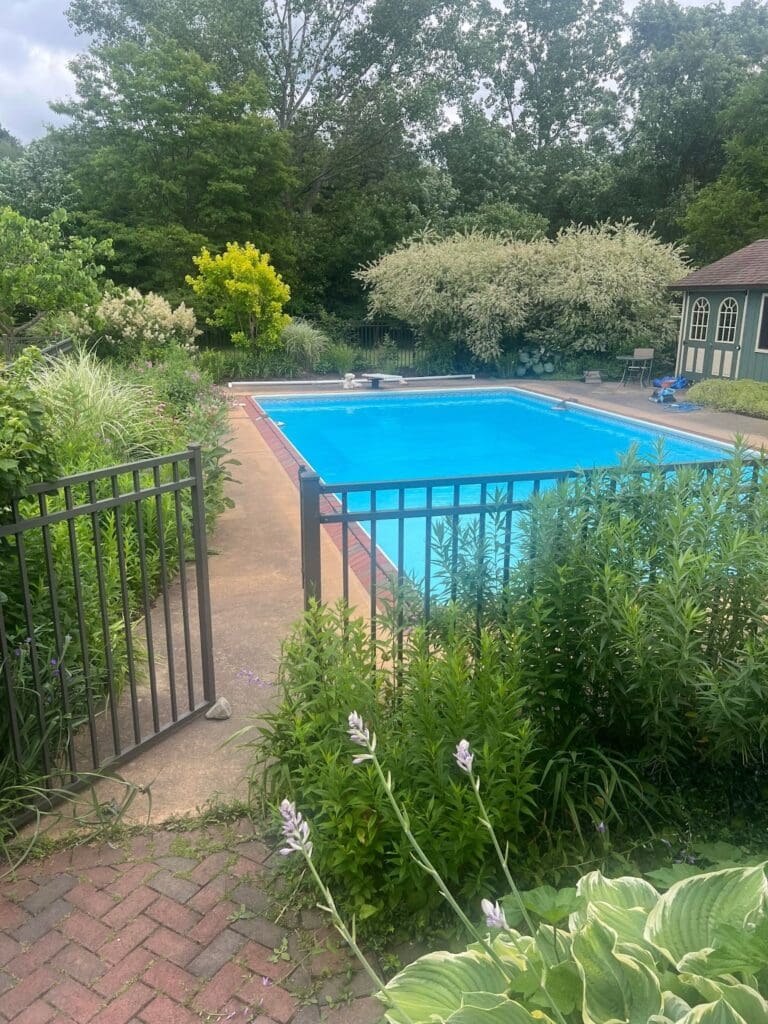
- My garden encourages me to try things and then, if they don’t work, to try something else. We planted bulbs in the tree pits in the front for a bit of spring color. It’s a good thing we got this picture of the tulips because it was their last before being eaten by deer. Now we are trying daffodils, and our fingers are crossed for this year. This year, I saved seeds from our two best varieties of tomatoes and am trying to regrow them. They have sprouted, but I’m trying to manage my expectations because they may not produce fruit, and they may not produce the same variety of fruit, I have been told.
- I am encouraged by my garden to experiment and branch out. My dad is not a fan of alliums, so my mom never grew garlic or onions. We decided to try garlic, and now it’s our favorite crop. It tastes so much better than store-bought, it’s easy to weed, and it’s the gift that keeps giving, first with scapes and then with bulbs. Plus, it’s so easy to propagate – except when squirrels dig up the bulbs for a winter snack!
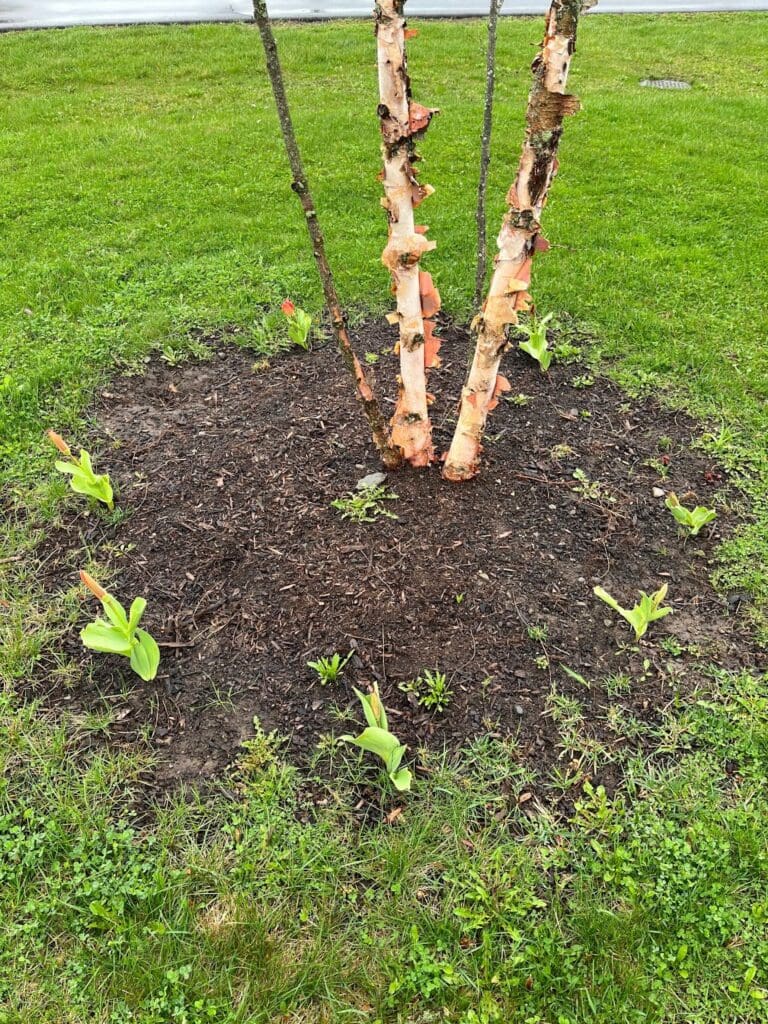

- It’s interesting how a garden’s beauty is often in the eye of the beholder. I love the dandelions in this picture, but I know that some people are not fans, like my elderly neighbor who stopped by to “let me know” that wish flowers are actually spreaders of dreaded dandelion seed. This dandelion patch being enjoyed by our dog and his friend was filled with clover flowers a month later, so there is no need to intervene if dandelions aren’t your thing. Other things that might be considered weeds that I like to encourage are Queen Ann’s Lace and Goldenrod. One thing I pull that others enjoy is Fleabane.
- I am learning to embrace change. The garden will be totally different in a month, and I love the variety of looks and appreciate that different plants take the stage in the same bed in other seasons, for example, in the pictures below.
- I am learning not to try to control everything. I got a little behind on my weeding, but received a surprise benefit.
- The most important thing is to remember to feed your soul. Gardening is a hobby that is healthy and fulfilling. I am grateful to my mom for teaching me to love gardening and to Wendy for showing me additional possibilities.
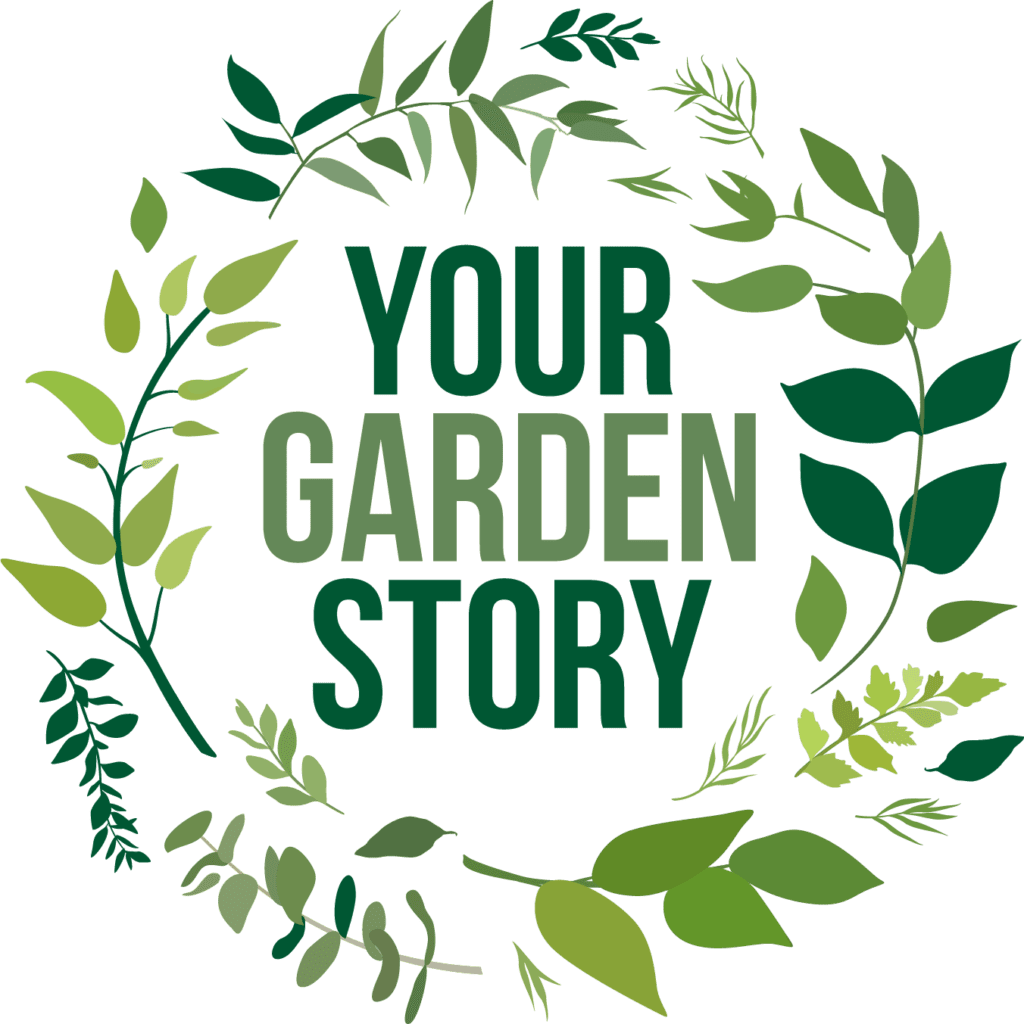
If you have stories about your garden, please send them to [email protected]. We can publish more here later in the year. We would love to hear from you.
Your Garden Story. Here to help us all become gardeners and make the world greener.
